Year 3 Teaching Resources
Explore printable worksheets, digital activities, games and more Year 3 resources, all aligned to the Australian curriculum! The teacher-created resources have all been designed with primary teachers and students in mind to meet the special needs of children as they transition into the middle years of their primary school education.
Carefully curated and thoroughly reviewed by the expert teachers of the Teach Starter team to ensure they're classroom-ready, our Year 3 resources can save you lesson planning time this school year with editable and differentiated options at the ready.
Teach Starter’s Year 3 resources utilise a vast array of resource types and have something for every learning area. Here's just a taste of what you'll find for your classroom!
- Spelling words and English worksheets
- Fractions activities and Maths worksheets
- Social and emotional learning activities
- Narrative writing stimuli
- Language conventions practice
- And so much more!
Are you new to teaching Year 3? Here's a look at what this year of primary school is all about!
What Is Year 3 in Australia?
Year 3 sits right in the middle of primary school for most students in Australia as the fourth year of compulsory education.
How Old Are Kids in Year 3?
The exact age of students will vary slightly by state (and birthday!), but most children in your Year 3 class will be 8 to 9 years old.
What Do Students Learn in Year 3?
Year 3 is a big one for Australian students. Many will sit the NAPLAN tests, and more than a few will hit double digits before the year is through. This is a big year for Maths between the introduction of more complex fractions and formal multiplication, as well as even more skill-building in other learning areas.
Exactly what they're expected to learn will depend to some degree on the state or territory where you are teaching, but here's a look at what your students can expect to encounter in the key areas of the curriculum!
English
Year 3 students continue to develop their reading, writing, speaking, and listening skills in their English lessons. Reading will involve more complex texts, including longer novels, non-fiction texts, and poetry.
Students will also be expected to analyse these texts more deeply, examining themes, character development, and literary techniques. Comprehension skill-building will require deeper analysis of texts and drawing inferences from what is read.
While Year 2 instruction focuses on basic writing skills such as sentence structure and punctuation, this older group of students will move toward more advanced writing skills such as paragraphing, using descriptive language, and organising ideas in a logical way.
Grammar and spelling will also become a greater focus this year, with an emphasis on understanding and applying more complex grammar rules and spelling patterns.
Maths
Fractions feature front and centre of the Year 3 Maths curriculum. Students will learn to identify, compare, and order unit fractions (those being fractions with a numerator of 1), as well as use them in simple problem-solving contexts.
We already alluded to this being a big year for multiplication, and is it ever! Year 3 students learn the basic multiplication facts — such as 2 x 2 = 4 and 3 x 3 = 9 — and they begin to use these facts to solve multiplication and division problems. They also learn to interpret and create simple multiplication and division problems.
Students will have the chance to build upon their understanding of measurement concepts from Year 2, including length, mass, and capacity. They'll learn to measure and estimate using standard units, plus how to compare and order measurements.
Maths students will expand their knowledge of 2D shapes this year, and they will begin to learn about three-dimensional shapes and their properties.
Place value is still a big part of maths, of course. Year 3 students expand their understanding of place value to include numbers up to 10,000, and they learn to read, write, and compare four-digit numbers. They also learn to use place value to solve addition and subtraction problems.
Science
Science instruction in Year 3 is more focused on building a deeper understanding of scientific concepts and their applications, as compared to Year 2. It also emphasises the development of scientific inquiry skills that will help kids become more proficient in conducting scientific investigations and communicating their findings.
Students in Year 3 learn to ask questions, plan and conduct investigations, collect and record data, and communicate their findings as part of their development of science inquiry skills. They spend a portion of the year learning about the characteristics of living things, including plants and animals. Year 3 students will have the chance to explore the life cycles of plants and animals, as well as learning about the needs of living things and their habitats.
While they're learning about things that live on Earth, they're also learning about the planet itself, exploring geological features such as rocks, soil, and minerals. They also explore heat energy and how it can be transferred from one object to another.
Last, but certainly not least, Year 3 students learn about the properties and states of matter, including solids and liquids (gasses are explored later on in primary school).
Humanities and Social Sciences
Building on the foundation set in Year 2, Year 3 HAAS lessons build a deeper understanding of historical events and concepts, as well as exploring the social and economic systems that underpin Australian society.
Students learn about the historical events, people, and places that have shaped Australia's history. They explore the concept of change and continuity over time and learn to use historical sources to investigate the past. Students also study significant cultural events celebrated in our country and how they contribute to Australia's diversity and identity.
Geography instruction will guide students as they learn about the physical and cultural characteristics of places and regions. They'll learn more about the representation of Australia as states and territories, and as Countries/Places of First Nations Australians. Students will also begin exploring Australia's neighbours such as New Zealand, Papua New Guinea, and Indonesia.
Civics instruction sees Year 3 students strengthening their understanding of what it means to live in a democratic society. They will draw upon their own personal experiences to examine why rules are important and to discuss how they can be active participants in the communities to which they belong.
Health and Physical Education
With their bodies rapidly changing, Year 3 students learn about the factors that influence their health and wellbeing, including the importance of good nutrition, hygiene, and sleep. They also learn about social and emotional health, including how to manage their feelings, develop positive relationships, and make safe and healthy choices.
In Year 3, there are a number of different types of safety on tap in lessons, including road safety, water safety, and personal safety. They develop an understanding of risk and learn strategies for staying safe in different situations.
Year 3 students also learn about the importance of being active and informed citizens in their community. They learn about the benefits of volunteering and begin to develop an understanding of the responsibilities and rights of individuals in society.
The Arts
In Year 3, students develop more advanced skills in drawing, painting, and other visual arts techniques. This includes studying the elements of art — such as line, shape, colour, and texture — and beginning to use these to create more complex artworks.
In music class, these children are learning all about musical notation and how to read and write simple music, while drama instruction explores different forms of drama, including role-playing, improvisation, and scripted performance. Students get the chance to learn about the elements of drama, such as character, plot, and setting, and begin to use these to create their own dramatic works.
- Plus Plan
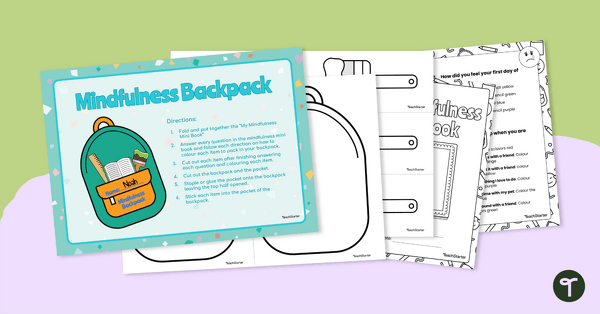
Mindfulness Activities for Kids - Backpack Craft and Book
Promote mindfulness and social and emotional learning with this Mindfulness Backpack activity.
- Plus Plan
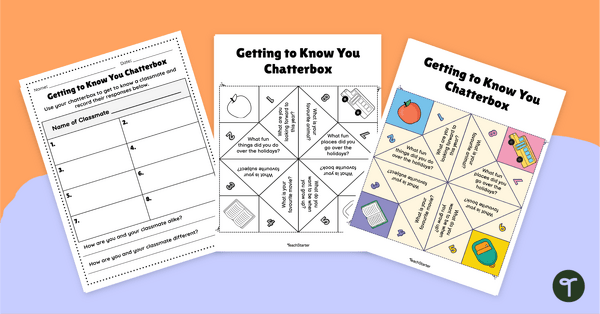
Getting to Know You Chatterbox
Use this getting to know you chatterbox template and summary sheet as a first day of school activity.
- Plus Plan
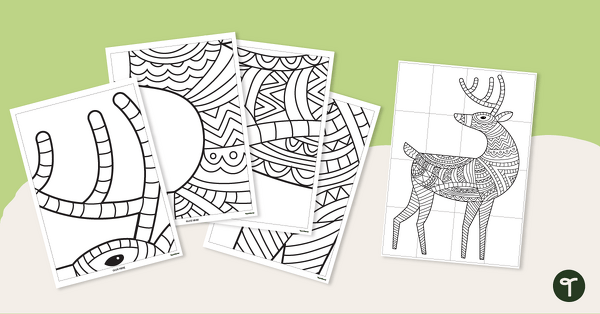
Whole-Class Colouring Sheet – Christmas Reindeer
Get creative with one of winter’s most famous animals in this class collaboration colouring activity.
- Free Plan
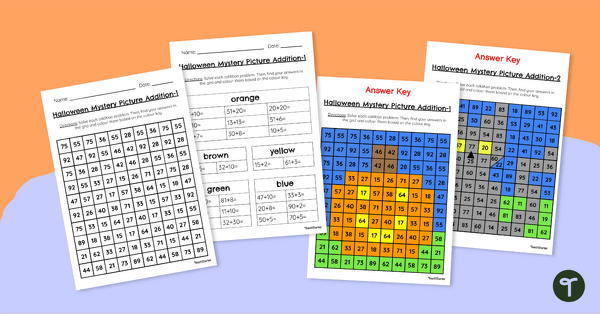
2-Digit Addition Colour by Number - Halloween Mystery Picture
Celebrate the coming of Halloween and practise adding 2-digit numbers up to 99 with this set of Halloween mystery picture worksheets.
- Plus Plan

Remembrance Day Comprehension Worksheet
Explain Remembrance Day history and traditions to your students with a printable cloze reading passage and comprehension questions.
- Plus Plan

Reading Scales – Measuring Mass Match-Up Worksheet
A worksheet to give students practice at reading scales to measure mass.
- Plus Plan

Multiplication and Division Speed Drill Worksheets – Facts of 6
A set of worksheets to help students develop fast and accurate recall of the six times tables.
- Plus Plan
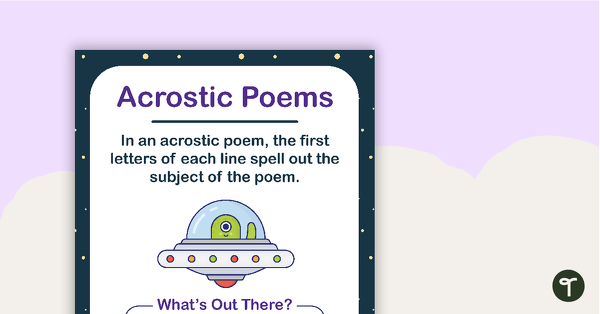
Acrostic Poems Poster and Templates
Use this acrostic poem example and accompanying templates to teach your students how to write an acrostic poem.
- Plus Plan
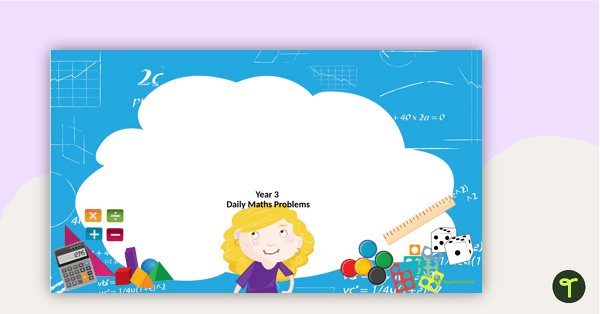
Daily Maths Problems - Year 3
A 63 slide editable PowerPoint Template for problem solving in mathematics.
- Free Plan
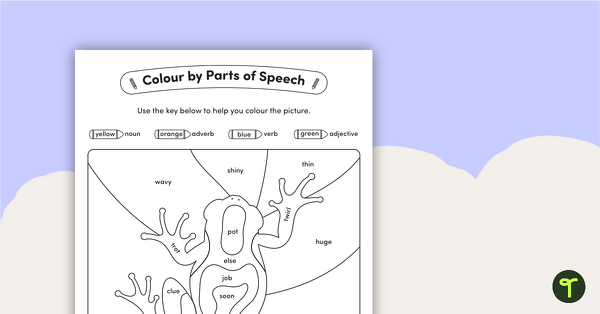
Colour by Parts of Speech - Nouns, Verbs, Adjectives, Adverbs - Frog
Consolidate your parts of speech lesson by colouring nouns, verbs, adjectives and adverbs on the frog.
- Plus Plan

Multiplication and Division Interactive PowerPoint
An engaging 64 slide interactive PowerPoint to use when learning about multiplication and division.
- Plus Plan
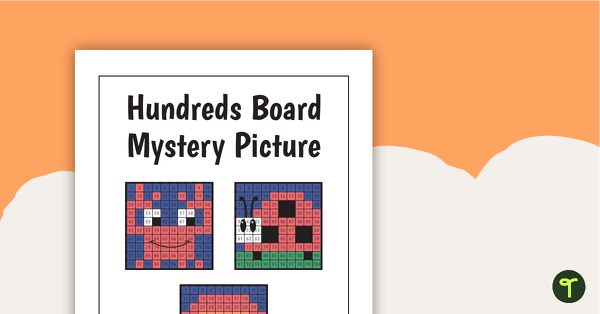
Hundreds Board Mystery Picture Addition Task Cards
A set of 32 activity task cards that require students to complete addition problems and colour in a hundreds chart to reveal a mystery picture.
- Plus Plan
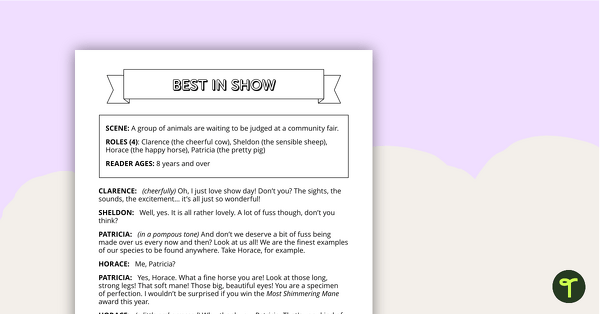
Readers' Theatre Script - Best In Show
A script which can be used during readers' theatre or Drama sessions, aimed at students 8 years and over.
- Plus Plan
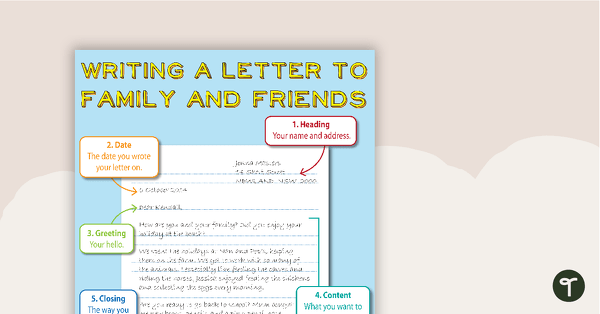
Writing a Friendly, Personal Letter Poster
An educational poster showing students how to lay out a personal letter.
- Plus Plan

How To Make Pancakes – Procedural Writing Activity
Get your students writing a procedure for their favourite breakfast foods with this example procedure text and writing scaffold.
- Plus Plan

Open-Ended Maths Problem Solving PowerPoint - Middle Primary
A PowerPoint with 20 open-ended problem solving questions covering a range of mathematical concepts.
- Plus Plan
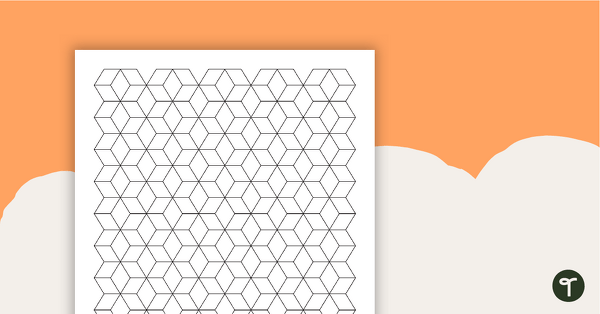
Tessellation Colouring Sheets
A set of 5 black and white tessellation shape colouring sheets.
- Plus Plan
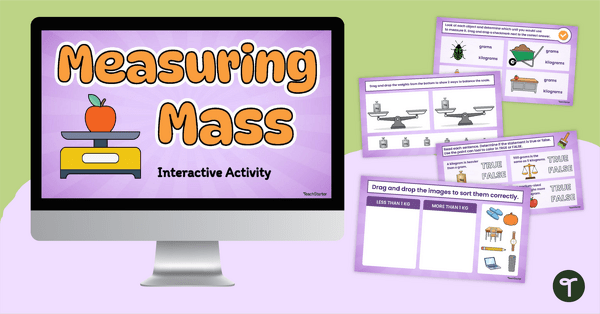
Measuring Mass Digital Learning Activity
Practise measuring mass with this fun and engaging digital learning slide deck.
- Plus Plan
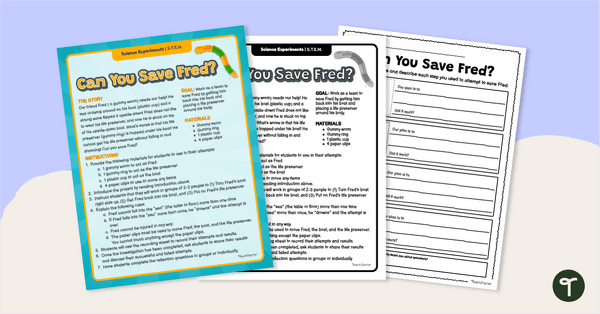
Can You Save Fred? Activity
Can You Save Fred? Encourage teamwork and resilience with a fun, hands-on problem-solving and team-building STEM activity.
- Plus Plan
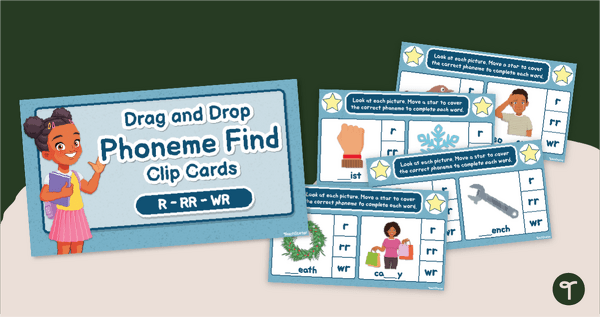
Phoneme Find - R, RR, and WR Spelling Game
Decide when to use r, rr, or wr to spell the /r/ sound with an engaging Interactive Phonics Activity!
- Plus Plan
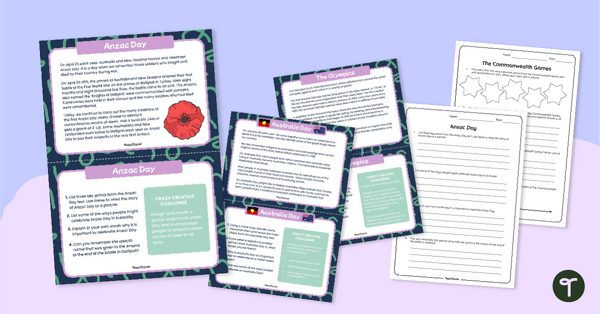
Comprehension Task Cards Summarising
Practise summarising text with these relevant events-based texts.
- Plus Plan
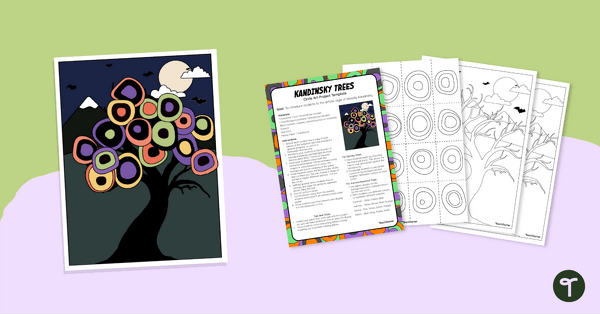
Kandinsky Trees - Circle Art Activity
Create seasonal trees in the artistic style of Wassily Kandinsky with a fun Dot Day Art Project!
- Plus Plan
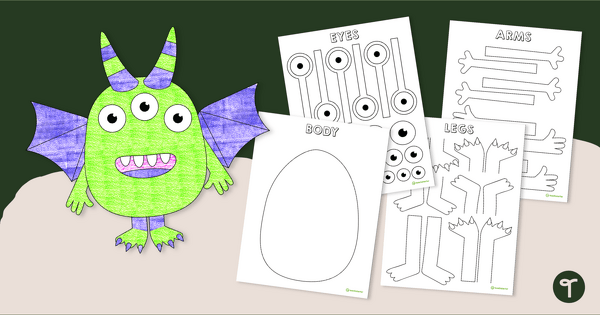
Make a Monster - Art Activity Template
Make a spectacularly fun monster with a printable Monster Craft Template.
- Plus Plan
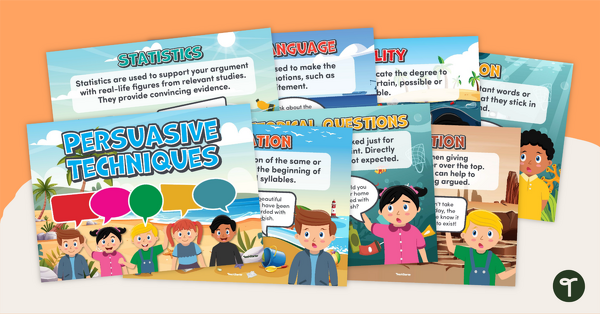
Persuasive Techniques Posters
Support students to improve their persuasive writing with these persuasive techniques posters.
- Plus Plan
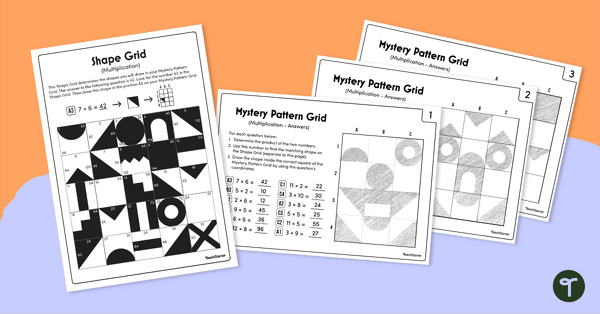
Mystery Pattern Grids (Multiplication)
Students solve multiplication facts, interpret grid coordinates and draw shapes to reveal a mystery picture.
- Plus Plan
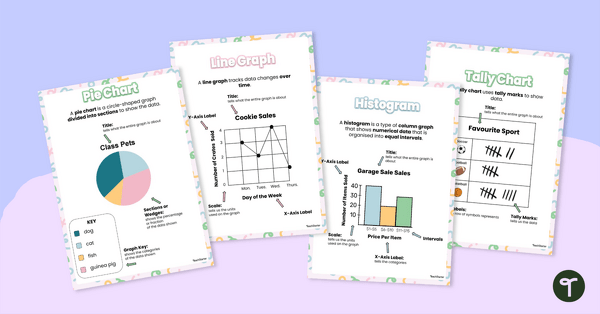
Types of Graphs Posters
This colourful and easy-to-digest visual display shows students the varying data displays they will encounter in their primary maths lessons.
- Plus Plan
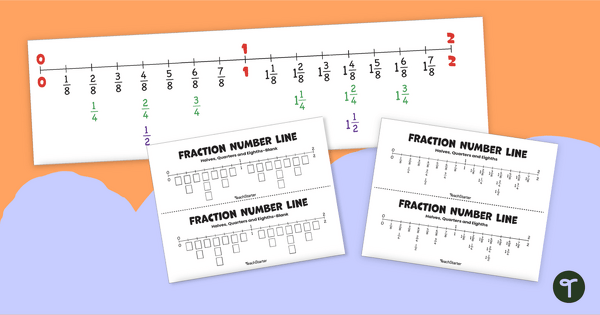
Fractions Number Line - Halves, Quarters and Eighths
Demonstrate the concept of fractions on a number line with a printable number line display and student reference sheets.
- Plus Plan
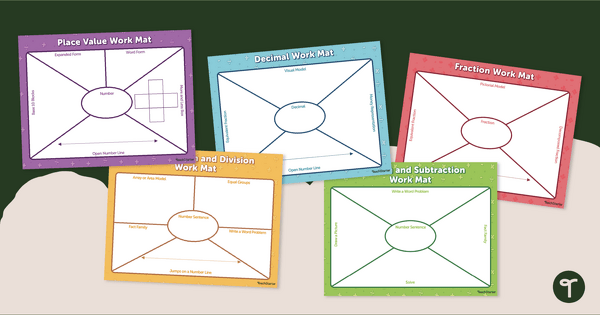
Printable Maths Mats - Graphic Organisers
Practice working on specific math concepts with our set of 5 printable math graphic organisers.
- Free Plan

Time Connectives Word Wall
Help your students demonstrate the passage of time in their writing with 35 time connective word cards.
- Plus Plan
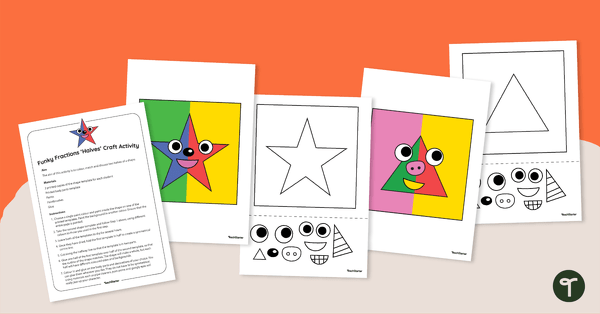
Funky Fraction Craft Activity (Halves)
A craft activity to encourage students to colour, match and discuss two halves of a shape.
- Plus Plan

Rainbow Arches - Editable Desk Name Plates
Create individualised desk name plates using this editable Rainbow Arches desk name plate template.
- Plus Plan
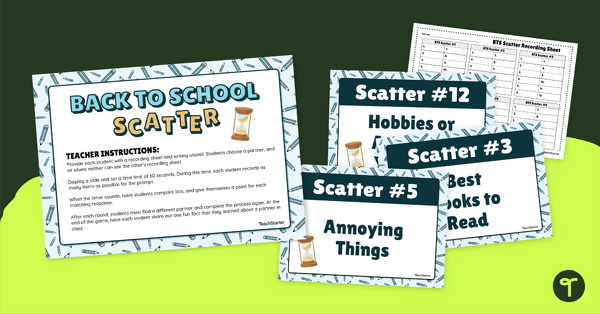
Collaborative Icebreaker - Back to School Scatter Game
Start the school year with a collaborative game to initiate student introductions.